Comments / Questions (44)
![]() Liesbeth wrote:
Liesbeth wrote:
Heel erg bedankt voor de snelle reactie!
16.06.2025 - 23:05
![]() Liesbeth wrote:
Liesbeth wrote:
Einde mouw moet ik de laatste 4 steken afkanten. Hoe kan ik afkanten aan het einde van een naald zonder dat er een steek overblijft?
16.06.2025 - 17:14DROPS Design answered:
Dag Liesbeth,
Bij de laatste steek knip je de draad af, je haalt het uiteinde van de draad door de laatste steek en trekt de draad aan.
16.06.2025 - 21:47
![]() Nina wrote:
Nina wrote:
Hej! En fråga gällande halsen- det står att de första 13 maskorna i början av två varv ska sättas på tråd för halsen, men sedan att det ska minskas för hals i början av varven. Vilka maskor minskar jag, om de första 13 är på tråden? De första maskorna efter de som är på tråden? Mvh, Nina
16.05.2024 - 10:20
![]() Robin Ryan wrote:
Robin Ryan wrote:
Hi! On the yoke decrease after joining sleeves, there is a K2tog before A4 , then A4, then a sl1k1psso after A4 and this is a reduction of 2 for each shoulder. The pattern says decrease of 8 per row, but I only see total decrease of 4 per row. What am I missing?
05.12.2022 - 03:44DROPS Design answered:
Hi Robin, You have 4 markers in the middle of each A.4, in each transition between the front/back pieces and sleeves. As you say, you decrease before and after each A.4: 2 x 4 = 8 stitches decreased on each decrease-row. Happy knitting!
05.12.2022 - 06:47
![]() Morard wrote:
Morard wrote:
Merci pour vos informations.
01.02.2021 - 12:27
![]() Morard wrote:
Morard wrote:
Bonjour, comment tricoter A4 au moment de la transition dos/devant ?
30.01.2021 - 10:52DROPS Design answered:
Bonjour Mme Morard, A.4 se compose de 6 mailles et doit être tricoté à cheval sur le devant/le dos et les manches pour former les lignes des raglans ainsi: tricotez les 3 dernières mailes du devant droit + les 3 premières mailles de la manche = 1er A.4. Tricotez les 3 dernières mailles de la manche + les 3 premières mailles du dos = 2ème A.4. Tricotez les 3 dernières mailles du dos + les 3 premières mailles de la manche = 3ème A.4. Tricotez les 3 dernières mailles de la manche + les 3 premières mailles du devant = 4ème A.4. Bon tricot!
01.02.2021 - 08:33
![]() Amanda Westbye wrote:
Amanda Westbye wrote:
Hva er forskjellen på Baby merino uni color og Baby merino mix?
13.10.2020 - 22:03DROPS Design answered:
Hej Amanda. Det är bara lite skillnad i färgen. Uni color är helt enfärgade och Mix är lite mixade i färgen (du ser skillnaden på färgkartan). Mvh DROPS design
15.10.2020 - 08:52
![]() Siri Granum wrote:
Siri Granum wrote:
Det står ikke forklaring på hvordan å strikker mønsteret på boken. Tegn er en runding med skrå strek
09.01.2020 - 17:25DROPS Design answered:
Hej Siri, cirklen betyder kast og den skrå strek er 2 rett sammen. God fornøjelse!
15.01.2020 - 15:43
![]() Élodie wrote:
Élodie wrote:
Bonjour, J'ai choisi une laine en taille 3,5 au lieu de 3. Pouvez vous me donner des indications sur l'échantillon à réaliser pour vérifier la taille ? Merci.
05.11.2019 - 12:43DROPS Design answered:
Bonjour Élodie, l'échantillon est primordial pour réussir l'ouvrage conformément aux explications - plus d'infos ici. Bon tricot!
05.11.2019 - 14:50
![]() Noora Voutilainen wrote:
Noora Voutilainen wrote:
Hei! Minulla on ongelmia kaarrokkeen kanssa. Ohjeessa käsketään siirtää kaarrokkeen alussa samalle pyöröpuikolle kaikki silmukat, myös hihojen silmukat. Näin tehdessä kainaloiden päätellyt silmukat kiristävät työtä (kaikki hihan silmukat kerralla puikolla)siten, että hihan neulominen on lähes mahdotonta. Mikä neuvoksi??
09.05.2019 - 14:39DROPS Design answered:
Neulominen on aluksi hankalaa, kun kaarrokkeen osat on yhdistetty, se kuitenkin helpottuu joka kerroksen jälkeen. Voit neuloa kaarrokkeen ensimmäiset kerrokset kahdella pyöröpuikolla, mikä voi tehdä neulomisesta hieman helpompaa.
08.01.2020 - 16:54
Jolly May#jollymaycardigan |
||||||||||||||||||||||||||||
 |
 |
|||||||||||||||||||||||||||
Knitted DROPS jacket with a small cable edge, lace pattern and raglan in ”BabyMerino”. Size: XS - XXXL.
DROPS 169-27 |
||||||||||||||||||||||||||||
|
GARTER ST (back and forth): K all rows. 1 ridge = 2 rows K. GARTER ST (worked in the round): 1 ridge = 2 rounds. * K 1 round and P 1 round *, repeat from *-*. PATTERN: See diagrams A.1 to A.4. The diagrams show all rows in pattern seen from RS. INCREASE TIP: Inc 1 st on each side of marker as follows: Work until 1 sts remain before marker: Make 1 YO, work 2 sts in stocking st (marker is in the middle of these 2 sts), make 1 YO. On next row work YOs twisted to avoid holes - NOTE: Work inc sts in stocking st on front piece and in stocking st until they fit pattern on back piece and on sleeves. RAGLAN: Dec for raglan on each side of A.4 in every transition between sleeves and body. DEC AS FOLLOWS FROM RS: Beg 2 sts before A.4, K 2 tog, A.4 (= 6 sts), slip 1 st as if to K, K 1, psso (= 2 sts dec). DEC AS FOLLOWS FROM WS: Beg 2 sts before A.4, P 2 twisted tog, A.4 (= 6 sts), P 2 tog (= 2 sts dec). BUTTONHOLES: Dec for buttonholes on right band. 1 buttonhole = cast off third and fourth st from edge and cast on 2 new sts on next row over these sts. Dec for buttonholes when piece measures (first buttonhole should be in the middle of A.2): SIZE XS: 9, 17, 24, 31, 38 and 45 cm. SIZE S: 9, 17, 25, 33, 40 and 47 cm. SIZE M: 9, 17, 25, 33, 41 and 49 cm. SIZE L: 9, 16, 23, 29, 36, 43 and 50 cm SIZE XL: 10, 17, 24, 31, 38, 45 and 52 cm SIZE XXL: 10, 18, 25, 32, 39, 46 and 53 cm SIZE XXXL: 10, 18, 25, 33, 40, 48 and 55 cm DECREASE TIP (applies to neck edge): To calculate how often dec should be done, use the total no of sts on row (e.g. 126 sts), minus bands (e.g. 10 sts) and divide the remaining sts by no of dec to be done (e.g. 14) = 8.3. I.e. in this example work approx. every 7th and 8th st tog (and do not dec of bands). ---------------------------------------------------------- BODY: Worked back and forth on circular needle from mid front. Cast on 327-355-383-453-481-551-579 sts (incl 5 band sts in each side towards mid front) on circular needle size 2.5 mm with Baby Merino. P 1 row from WS. Work next row as follows from RS: 5 band sts in GARTER ST - see explanation above - * K 2, P 5 *, repeat from *-* until 7 sts remain on needle, finish with K 2 and 5 bands sts in garter st. Continue rib like this. When piece measures 3-3-3-3-4-4-4 cm, dec 1 st in every P-section by working the first 2 sts in every P-section P tog (from RS). Repeat dec when piece measures 4-4-4-4-5-5-5 cm, but now work the last 2 sts in every P-section P tog = 237-257-277-327-347-397-417 sts on needle. Work next row as follows from RS: 5 band sts as before, work pattern according to diagram A.1A until 12 sts remain on row (= 22-24-26-31-33-38-40 repetitions of 10 sts), work A.1B (= 7 sts) and finish with 5 band sts as before. When A.1 has been worked vertically, 191-207-223-263-279-319-335 sts remain on needle and piece measures approx. 7-7-7-7-8-8-8 cm. P 1 row from WS (continue bands as before) while dec 5-2-1-5-2-6-5 sts evenly - READ DECREASE TIP! (do not dec over bands) = 186-205-222-258-277-313-330 sts. Switch to circular needle size 3 mm and work next row from RS as follows - remember BUTTONHOLES on band - see explanation above: 5 band sts as before, work pattern according to diagram A.2 until 5 sts remain on row, and finish with 5 band sts in garter st as before. Continue the pattern like this - NOTE: On 7th row in diagram K last st before band. After A.2 insert 1 marker 49-54-58-67-72-81-85 sts in from each side (= 88-97-106-124-133-151-160 sts between markers on back piece). Then work as follows (1st row = RS): 5 band sts as before, K 1, P 2, work in stocking st until marker in the side, work A.3A (= 6 sts), repeat A.3B over the next 72-81-90-108-117-135-144 sts (= 8-9-10-12-13-15-16 repetitions of 9 sts), work A.3C (= 10 sts), marker, work in stocking st until 8 sts remain on row, finish with P 2, K 1 and 5 band sts as before. Continue pattern like this. REMEMBER THE KNITTING TENSION When piece measures 12 cm, inc 1 st on each side of marker in each side - READ INCREASE TIP (= 4 sts inc). Repeat inc every 5-5-6-8-10-10-10 cm a total of 4-4-4-3-3-3-3 times = 202-221-238-270-289-325-342 sts - NOTE: Work inc sts in stocking st on front piece and in stocking st until they fit pattern on back piece. When piece measures 33-34-35-36-37-38-39 cm, work next row from WS as follows: Work 50-55-58-66-70-79-83 sts (= left front piece), cast off 6-6-8-8-10-10-10 sts for armhole, work 90-99-106-122-129-147-156 sts (= back piece), cast off 6-6-8-8-10-10-10 sts for armhole and work the remaining 50-55-58-66-70-79-83 sts (= right front piece). Put piece aside and knit the sleeves. Worked in the round on double pointed needles. Cast on 52-52-61-61-61-70-70 sts on double pointed needles size 2.5 mm with Baby Merino. K 1 round. Then work pattern in the round according to diagram A.2 - NOTE: On 7th round in A.2 K last st on round (applies to size L + XL + XXL). When A.2 has been worked, switch to double pointed needles size 3 mm. Insert 1 marker at the beg of the round. Work next round as follows: Work A.3A (= 6 sts), work A.3B over the next 36-36-45-45-45-54-54 sts (= 4-4-5-5-5-6-6 repetitions of 9 sts) and finish with A.3C (= 10 sts). Continue pattern like this. When piece measures 5-6-6-7-5-9-9 cm, inc 2 sts mid under sleeve - READ INCREASE TIP. Repeat inc every 3.-2½.-3.-2½.-2½.-2½.-2. cm 14-16-13-15-16-14-17 times in total = 80-84-87-91-93-98-104 sts – NOTE: Work inc sts in stocking st until they fit the pattern again. Work until piece measures approx. 47-47-46-46-45-45-45 cm (NOTE: Shorter measurements in the larger sizes because of longer yoke) – adjust to work the same length in repetition of A.3 as on back piece before cast off for armholes. Work next round as follows: Cast off 3-3-4-4-5-5-5 sts, work 74-78-79-83-83-88-94 sts and cast off the remaining 3-3-4-4-5-5-5 sts. Put piece aside and knit another sleeve. YOKE: Slip sleeves on to same circular needle size 3 mm as body where armholes were cast off (without working them first) = 338-365-380-420-435-481-510 sts. Insert 1 marker in every transition between sleeves and body = 4 markers. Continue with pattern on sleeves and back piece as before and work in stocking st with bands on front piece. Work in addition A.4 now in every transition between body and sleeves (markers are in the middle of A.4). On first row from RS beg dec for RAGLAN – see explanation above (= 8 sts dec). Repeat dec for raglan on every other row (i.e. every row from RS) 24-25-28-29-32-34-34 times in total and then every row (i.e. both from RS and WS) 4-5-2-3-0-0-3 times in total - NOTE: Work sts that do not fit A.3 on back and sleeves in stocking st when dec. NECK: AT THE SAME TIME when piece measures approx. 46-48-50-51-53-54-56 cm (1-2 rows should be worked after last buttonhole on band), slip the first 10-13-16-18-22-26-27 sts at beg of the next 2 rows on 1 stitch holder for neck (work them before slipping them on stitch holder to avoid cutting the yarn). Continue with pattern and raglan as before and cast off for neck at beg of every row in each side as follows: Cast off 3 sts 0-0-0-1-1-2-2 times, 2 sts 2 times and 1 st 3-3-3-4-4-4-4 times. After all dec and cast offs for raglan and neck, 80-85-94-106-113-129-132 sts remain on needle. NECK EDGE: Pick up from RS approx. 114-126-140-164-179-209-214 sts (incl sts on stitch holders at the front) on circular needle size 2.5 mm. K 1 row from WS while dec evenly to 110-112-128-130-140-144-146 sts (i.e. dec approx. 4-14-12-34-39-65-68 sts) – READ DECREASE TIP. K 4 rows and loosely cast off with K from RS. ASSEMBLY: Sew the openings under the sleeves. Sew on buttons. |
||||||||||||||||||||||||||||
Diagram explanations |
||||||||||||||||||||||||||||
|
||||||||||||||||||||||||||||
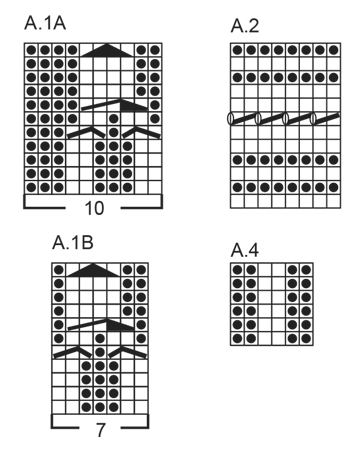
|
||||||||||||||||||||||||||||
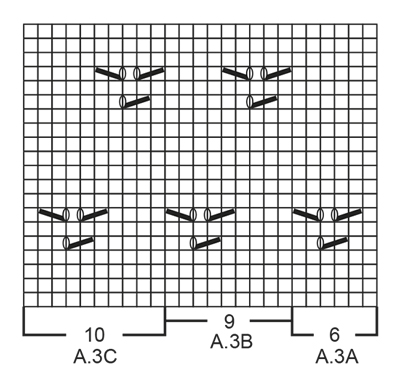
|
||||||||||||||||||||||||||||
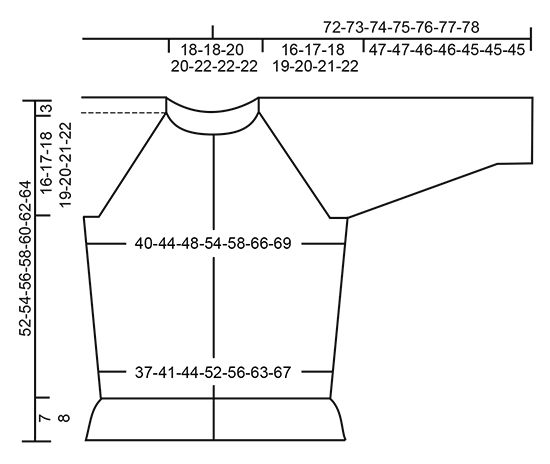
|
||||||||||||||||||||||||||||
Have you finished this pattern?Tag your pictures with #dropspattern #jollymaycardigan or submit them to the #dropsfan gallery. Do you need help with this pattern?You'll find 30 tutorial videos, a Comments/Questions area and more by visiting the pattern on garnstudio.com. © 1982-2025 DROPS Design A/S. We reserve all rights. This document, including all its sub-sections, has copyrights. Read more about what you can do with our patterns at the bottom of each pattern on our site. |
||||||||||||||||||||||||||||









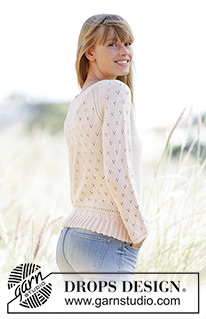
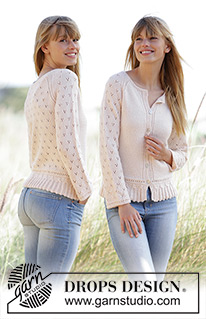

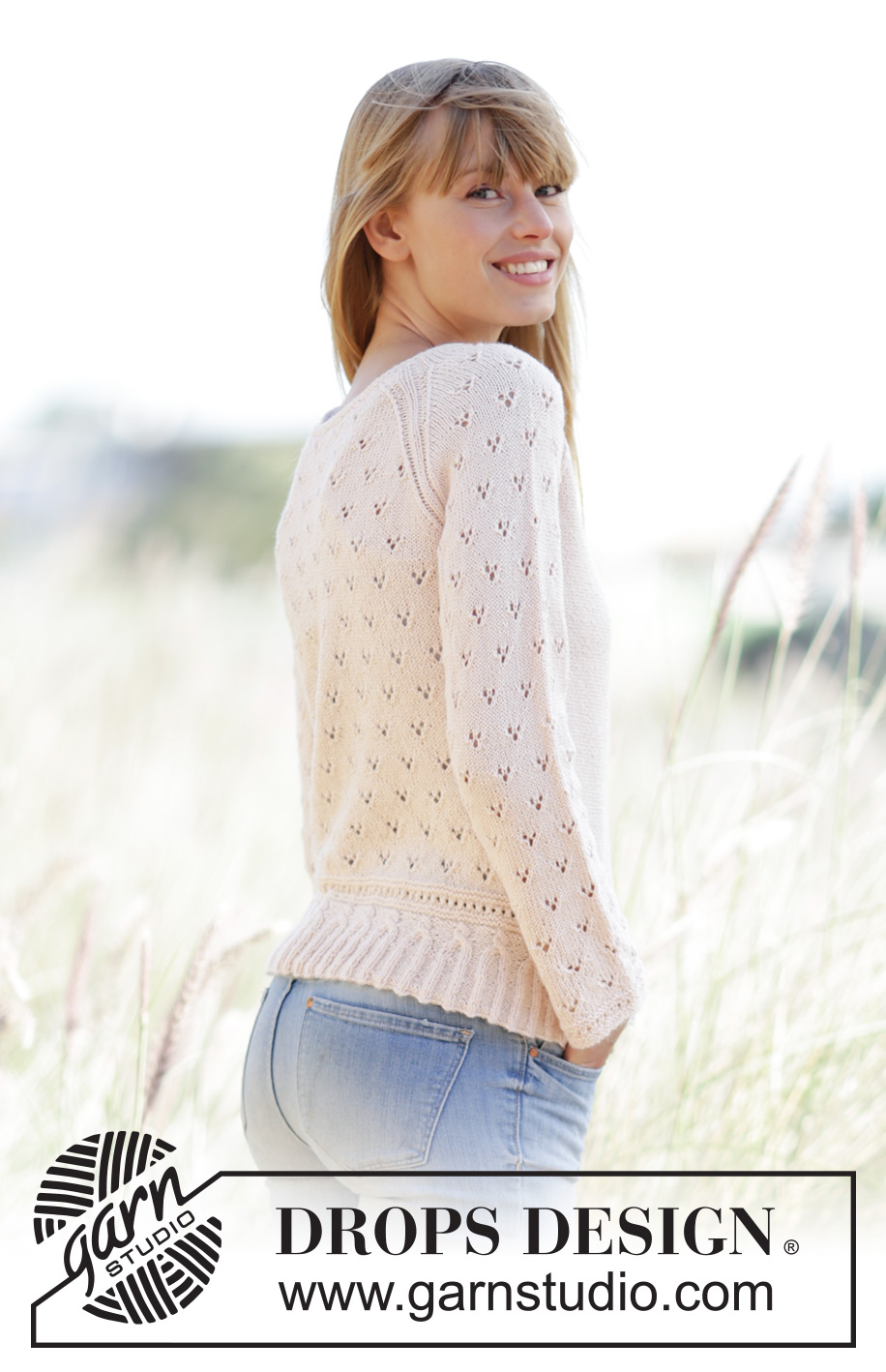
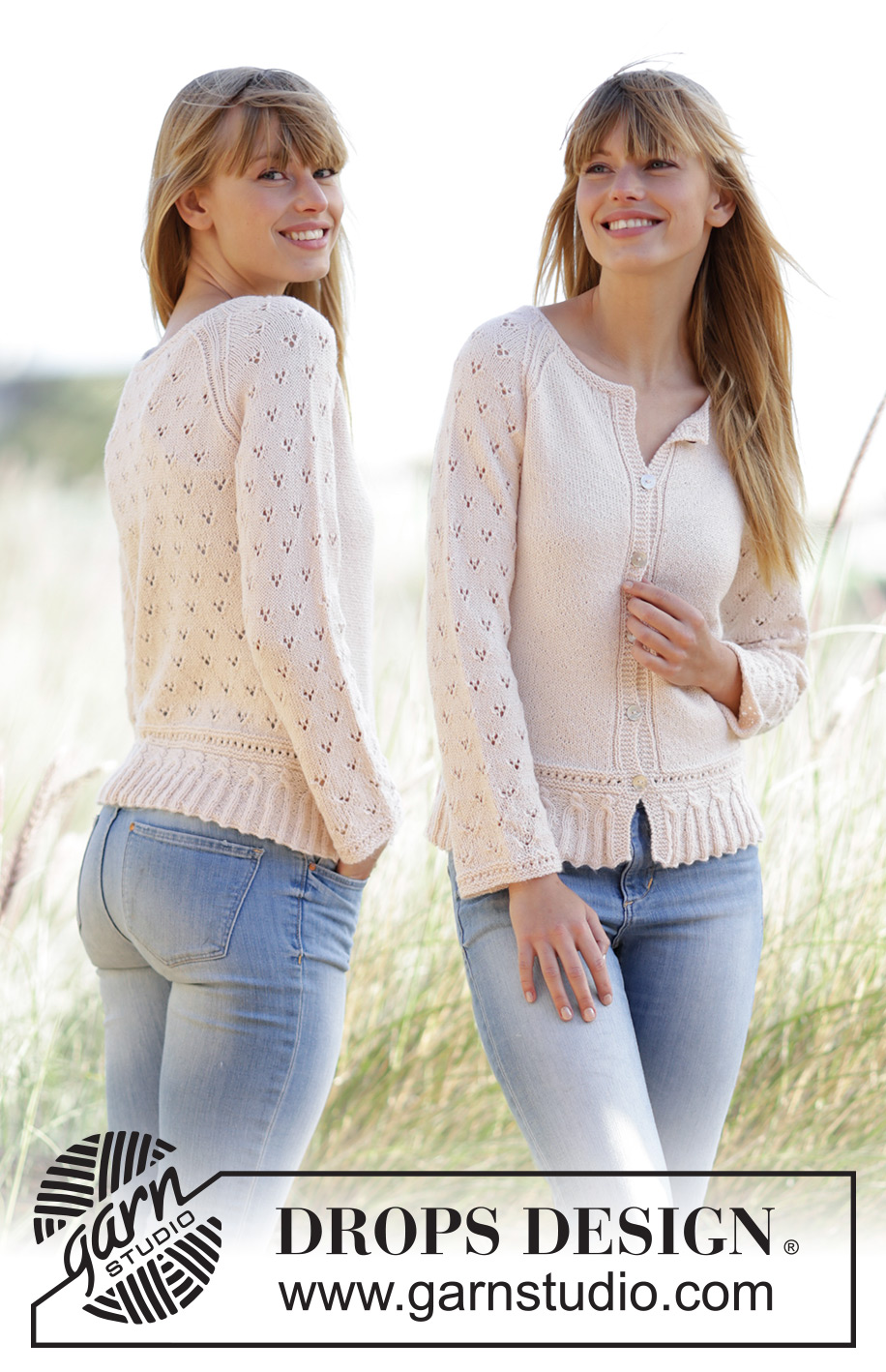




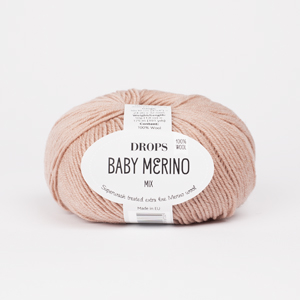



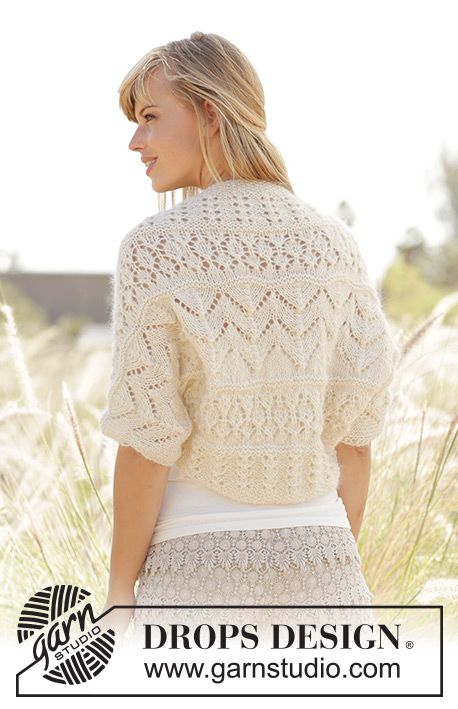

























































Post a comment to pattern DROPS 169-27
We would love to hear what you have to say about this pattern!
If you want to leave a question, please make sure you select the correct category in the form below, to speed up the answering process. Required fields are marked *.